|
Books Should Be Free Loyal Books Free Public Domain Audiobooks & eBook Downloads |
|
|
Books Should Be Free Loyal Books Free Public Domain Audiobooks & eBook Downloads |
|
History Books |
|---|
|
Book type:
Sort by:
View by:
|
By: Rex Beach (1877-1949) | |
|---|---|
 Flowing Gold
Flowing Gold
Unfairly given a dishonorable discharge from the army, Calvin Gray goes to Dallas, where he manages to win the trust of a jeweler and is able to sell a number of diamonds to the newly oil rich Briskows. He makes friends with the family and helps them adjust to their newly found riches. The Briskows, in turn, help him prove false the charges that caused his dismissal from the army. | |
By: Richard B. Morris (1904-1989) | |
|---|---|
 Jeffersonians, 1801-1829
Jeffersonians, 1801-1829
In this short work, Morris and Woodress present a selection of fascinating source materials to survey key events which occurred during the presidencies of Jefferson, Madison, Monroe, and John Quincy Adams. As the authors state in their preface, "The early part of the last century was an exciting time to live in America. The signers of the Declaration of Independence and the framers of the Constitution, mostly old men by now, saw that their experiment in republican government had turned out to be a success... | |
By: Richard Burton Deane (1848-1940) | |
|---|---|
 Mounted Police Life in Canada : a record of thirty-one years' service (1916)
Mounted Police Life in Canada : a record of thirty-one years' service (1916)
Learn more about the famous and respected Royal Canadian Mounted Police. This book is the personal recollections of one ‘Mountie’; his life, experiences and trials as an officer in a new frontier – The Canadian Northwest. | |
By: Richard Francis Burton (1821-1890) | |
|---|---|
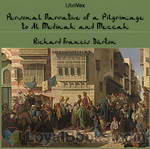 Personal Narrative of a Pilgrimage to Al-madinah and Meccah
Personal Narrative of a Pilgrimage to Al-madinah and Meccah
Sir Richard Francis Burton (1821 – 1890) was an English explorer, translator, writer, soldier, orientalist, ethnologist, linguist, poet, hypnotist, fencer and diplomat. He was known for his travels and explorations within Asia and Africa as well as his extraordinary knowledge of languages and cultures. According to one count, he spoke 29 European, Asian, and African languages.Burton's best-known achievements include traveling in disguise to Mecca, The Book of One Thousand Nights and A Night, an... | |
By: Richard Haigh (1895-) | |
|---|---|
 Life in a Tank
Life in a Tank
Richard Haigh was an Infantry lieutenant in the 2nd Royal Berkshire Infantry Regiment serving in the Somme area in 1916. Shortly after Tanks were first used in battle in September of 1916 the British Army asked for volunteers, Lieutenant Haigh signed up and was accepted in December of 1916. He describes the training and actions he participated in until the war ended in 1918. He was awarded MC in 1916 as Lt. (acting Capt.) Richard Haigh, Royal Berkshire Regiment. He was commissioned from the RMC (Sandhurst) to the Berkshires 16th Feb 1915; on resigning his commission in 1919, he joined the General Reserve of Officers. | |
By: Richard Harding Davis (1864-1916) | |
|---|---|
 Notes of a War Correspondent
Notes of a War Correspondent
Experiences and observations of the journalist in the Cuban-Spanish War, the Greek-Turkish War, the Spanish-American War, the South African War, and the Japanese-Russian War, accompanied by "A War Correspondent’s Kit." | |
 Men of Zanzibar
Men of Zanzibar
This is the story of Hemingway, who, after a hunting trip in Uganda, settles in Zanzibar for a while to live among the English-speaking expatriate community on that island. While keeping his true identity well to himself, he falls in love with Ms. Polly Adair, the American Belle of the little society. But when he asks her to marry him, it seems that Ms. Adair has a secret... | |
By: Richard W. Church (1815-1890) | |
|---|---|
 Bacon
Bacon
This investigation of Bacon the scholar and man of letters begins with a look at the early days ang progresses to his relationships with Queen Elizabeth and James I. It includes accounts of his positions as solicitor general, attorney-general, and chancellor. The book concludes with Bacon's failure, his overall philosophy, and summaries of his writings. | |
By: Richard William Church (1815-1890) | |
|---|---|
 Beginning of the Middle Ages
Beginning of the Middle Ages
In 395 A.D. Theodosius, the last ruler of the undivided Roman Empire died. To his young and incompetent son, Honorius, he left the government of its western half. Honorius depended upon the great general, Stilicho, to withstand the Visigoths under Alaric. But when he fecklessly abandoned his general to execution by palace intriguers, Alaric conquered and sacked Rome . Thus opened the era of chaotic leadership, social disintegration, and barbarian conquest, which used to be called the Dark Ages. The Franks emerged and helped to found the temporal power of the Papacy... | |
By: Richard Wilson (1887-1976) | |
|---|---|
 Indian Story Book
Indian Story Book
Richard Wilson has taken tales from the two great Indian epics, the Rāmāyaṇa and the Mahābhārata, as well as other early sources, and has retold them in English, in an effort to showcase to young English-speaking readers that 'oriental' stories share the same elements as tales they are used to. Love, hate, virtue, oppression, tenderness, bravery and resourcefulness and an ultimate desire to conquer evil. - Summary by Paraphrased from the Introduction | |
By: Roald Amundsen (1872-1928) | |
|---|---|
 The South Pole; an account of the Norwegian Antarctic expedition in the Fram, 1910-12
The South Pole; an account of the Norwegian Antarctic expedition in the Fram, 1910-12
In contrast to Scott’s South Pole expedition, Amundsen’s expedition benefited from good equipment, appropriate clothing, and a fundamentally different primary task (Amundsen did no surveying on his route south and is known to have taken only two photographs) Amundsen had a better understanding of dogs and their handling, and he used of skis more effectively. He pioneered an entirely new route to the Pole and they returned. In Amundsen’s own words: “Victory awaits him who has everything in order — luck, people call it... | |
By: Robert Armitage Sterndale | |
|---|---|
 Natural History of the Mammalia of India and Ceylon
Natural History of the Mammalia of India and Ceylon
NATURAL HISTORY OF THE MAMMALIA OF INDIA AND CEYLON.By Robert A. Sterndale, F.R.G.S., F.Z.S., &C., PREFACE. This work is designed to meet an existing want, viz.: a popular manual of Indian Mammalia. At present the only work of the kind is one which treats exclusively of the Peninsula of India, and which consequently omits the more interesting types found in Assam, Burmah, and Ceylon, as well as the countries bordering the British Indian Empire on the North. The geographical limits of the present work have been extended to all territories likely to be reached by the sportsman from India, thus greatly enlarging the field of its usefulness... | |
By: Robert Balmain Mowat (1883-1941) | |
|---|---|
 Wars of the Roses 1377-1471
Wars of the Roses 1377-1471
The Wars of the Roses, 1377-1471, were a series of English civil wars fought for the control of the throne of England between two rival cadet branches of the House of Plantagenet, Lancaster and York. The Scottish historian, Robert Balmain Mowat writes that these wars saw "the death of the old England and the beginning of the new." But they also saw the emergence of great personalities: the noble Richard of York, Warwick the Kingmaker, King Edward IV, indolent and energetic by turns, and his relentless opponent, Margaret of Anjou, a true she-wolf of France. | |
By: Robert Dale Owen (1801-1877) | |
|---|---|
 Wrong of Slavery, the Right of Emancipation, and the Future of the African Race in the United States
Wrong of Slavery, the Right of Emancipation, and the Future of the African Race in the United States
"The Wrong of Slavery" is a work written by Robert Dale Owen based largely off of the work of the Freedmen's Inquiry Commission where he served. It traces the early beginnings of the slave trade from its English beginning to the United States Civil War. It puts a focus on the barbarism of the slave trade from capture and transportation to the arrival in the Americas, the extreme cruelties that took place in the West Indies and South America, facts about slavery in the United States, and the advantages of a freed black population to the South. | |
By: Robert Falcon Scott (1868-1912) | |
|---|---|
 The Journals of Robert Falcon Scott
The Journals of Robert Falcon Scott
Capt. Robert F. Scott's bid to be the leader of the first expedition to reach the South Pole is one of the most famous journeys of all time. What started as a scientific expedition turned out to be an unwilling race against a team lead by R. Admunsen to reach the Pole. The Norwegian flag already stood at the end of the trail when Scott's party reached their target. All the five men of the Scott expedition who took part in the last march to the Pole perished on their way back to safety. Robert F. Scott kept a journal throughout the journey, all the way to the tragic end, documenting all aspects of the expedition... | |
By: Robert Futrell (1917-1999) | |
|---|---|
 Vietnam: The Advisory Years to 1965
Vietnam: The Advisory Years to 1965
This book explains the policy of the United States and France toward Vietnam beginning after World War II until the beginning of America's entry into the Vietnam War in 1965. Summary by Craig Campbell | |
By: Robert Glass Cleland (1885-1957) | |
|---|---|
 History of California: The American Period
History of California: The American Period
The Author's own summary surveys “first the faint awakenings of American interest in the Spanish province of Alta California. The New England merchants traffic again along the sunlit, poorly guarded coast; the shadow of Russia hangs for a moment over San Francisco Bay; the hide and tallow vessels laboriously collect their cargoes at every little port...the first adventurous immigrants wind wearily down the mountain trails.... “Then the scene changes...English ambitions hold a threat of danger to the program of the United States; the Sacramento settlers raise the crude Bear Flag as a symbol of revolt; and finally a strong-willed President acquires California as the fruit of war... | |
By: Robert James Cressman | |
|---|---|
 Infamous Day: Marines At Pearl Harbor 7 December 1941
Infamous Day: Marines At Pearl Harbor 7 December 1941
Historical overview and personal reminiscences published in 1992. Pearl Harbor attack 7 December 1941. Part of U.S. Government U.S. Marine Corps World War II Commemorative Series. - Summary by David Wales | |
By: Robert James Manion (1881-1943) | |
|---|---|
 Surgeon In Arms
Surgeon In Arms
Robert James Manion was a Canadian doctor who volunteered in the Canadian medical corps during World War I. This book is his memoir of the war. After the war he entered politics and served in several Canadian governments. The listener may note a lack of mention of the United States soldier; this is because the memoir was written before the entry of that country into the war. - Summary by David Wales | |
By: Robert Louis Stevenson (1850-1894) | |
|---|---|
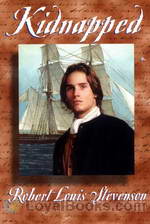 Kidnapped
Kidnapped
Kidnapped is the story of a 16-year old young man who is searching for his true birthright and is determined to make a fortune after the death of his parents. This timeless tale by Robert Louis Stevenson follows the life of David Balfour who leaves his home in Scotland after the death of his parents. First he meets his uncle for the first time in his life. His uncle is a very mean person who, at first, tried to kill David by devious means but then got him kidnapped onto a slave ship. In the ship, David makes friends with a Scottish rebel and together they successfully defeat the ship’s crew... | |
 The Black Arrow; a Tale of Two Roses
The Black Arrow; a Tale of Two Roses
The Black Arrow tells the story of Richard (Dick) Shelton during the Wars of the Roses: how he becomes a knight, rescues his lady Joanna Sedley, and obtains justice for the murder of his father, Sir Harry Shelton. Outlaws in Tunstall Forest organized by Ellis Duckworth, whose weapon and calling card is a black arrow, cause Dick to suspect that his guardian Sir Daniel Brackley and his retainers are responsible for his father’s murder. Dick’s suspicions are enough to turn Sir Daniel against him, so he has no recourse but to escape from Sir Daniel and join the outlaws of the Black Arrow against him... | |
By: Robert Marshall Utley | |
|---|---|
 Custer Battlefield: A History And Guide To The Battle Of The Little Bighorn
Custer Battlefield: A History And Guide To The Battle Of The Little Bighorn
It should be noted that this national park is now called the Little Bighorn Battlefield National Monument. “The long, tragic history of Indian warfare in the American West reached its climax with the defeat of Lt. Col. George Armstrong Custer and his 7th Cavalry in Montana’s valley of the Little Bighorn River on June 25, 1876. Although the Indians won the battle, they subsequently lost the war against the white man’s efforts to end their independent way of life. The story of the battle and its consequences is told in the following pages by Robert M... | |
By: Robert Means Lawrence (1847-1935) | |
|---|---|
 Magic of the Horse-Shoe
Magic of the Horse-Shoe
The study of the origin and history of popular customs and beliefs affords an insight, otherwise unattainable, into the operations of the human mind in early times. Superstitions, however trivial in themselves, relics of paganism though they be, and oftentimes comparable to baneful weeds, are now considered proper subjects for scientific research. While the ignorant savage is a slave to many superstitious fancies which dominate his every action, the educated man strives to be free from such a bondage, yet recognizes as profitable the study of those same beliefs... | |
By: Robert Michael Ballantyne (1825-1894) | |
|---|---|
 The Coral Island - A Tale of the Pacific Ocean
The Coral Island - A Tale of the Pacific Ocean
Ralph Rover is a traveler at heart, and has always dreamed of shipping out to the South Seas islands. He finally convinces his aging parents to let him go and find his way in the world. But the islands that Ralph finds are not as idyllic as in his dreams. Shipwrecked on a large, uninhabited island, Ralph and his fellow survivors, Jim and Peterkin, discover a world of hostile natives and villainous pirates. Danger, high adventure, and wonders of the sea greet them at every turn. When all seems lost, they find help from an unexpected source. | |
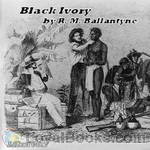 Black Ivory
Black Ivory
Although the book's title Black Ivory denotes dealing in the slave trade it is not our heroes who are doing it. At the very first chapter there is a shipwreck, which leaves the son of the charterer of the sinking ship, and a seaman friend of his, alone on the east coast of Africa, where Arab and Portuguese slave traders were still carrying out their evil trade, despite the great efforts of patrolling British warships to limit it and free the unfortunates whom they found being carried away in the Arab dhows... | |
 Gorilla Hunters
Gorilla Hunters
Ralph Rover is happily at home from his adventure on The Coral Island and wondering if he should settle down when he receives a visit from an eccentric stranger that won't give his name. This visit starts him on a string of adventures that find him getting charged by rhinoceroses, chased by African natives, and facing down a larger-than-life gorilla on his own. Of course, this is only the start of his adventure in to the land of the gorillas. Please note: this book has some words now considered derogatory, which are used in a generic way without any derogatory meaning... | |
 Charlie to the Rescue
Charlie to the Rescue
Charlie Brooke is always rescuing others, and sometimes even himself! His latest rescue, though, could turn out to be fatal... | |
 Island Queen
Island Queen
The story of Dominic, Otto and Pauline Rigonda, three siblings who are blown onto an island after being shipwrecked, and are later joined by the immigrant passengers and crew of a ship that is wrecked on the same island. When the question of government comes up, the little colony chooses a queen, and they work on improving the island for some time, despite internal dissensions, and an attack by savages. But eventually the colony encounters natural forces it cannot resist, and the queen and her family return to England, hopefully to live "happily ever after". | |
 Fighting the Flames
Fighting the Flames
| |
By: Robert R. Moton (1867-1940) | |
|---|---|
 Finding a Way Out: An Autobiography
Finding a Way Out: An Autobiography
He says about this work: "I have tried to record the events that have given character and colour to my own life, and at the same time to reflect upon the impressions made upon my mind by experiences that I could not always reconcile with what I had learned of American ideals and standards." - Summary by author in the preface | |
By: Robert Smythe Hichens (1864-1950) | |
|---|---|
 The Spell of Egypt
The Spell of Egypt
The author, a British journalist and novelist, is interested in the feel of the places he visits. He describes at length a visit he has made to Egypt, with emphasis on the emotional response the places generate. | |
By: Robert Stawell Ball (1840-1913) | |
|---|---|
 Great Astronomers
Great Astronomers
Of all the natural sciences there is not one which offers such sublime objects to the attention of the inquirer as does the science of astronomy. From the earliest ages the study of the stars has exercised the same fascination as it possesses at the present day. Among the most primitive peoples, the movements of the sun, the moon, and the stars commanded attention from their supposed influence on human affairs. From the days of Hipparchus down to the present hour the science of astronomy has steadily grown... | |
By: Robert Sterling Yard (1861-1945) | |
|---|---|
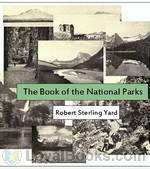 The Book of the National Parks
The Book of the National Parks
Robert Sterling Yard (February 1, 1861 – May 17, 1945) was an American writer, journalist, and wilderness activist. Born in Haverstraw, New York, Yard graduated from Princeton University and spent the first twenty years of his career in the editing and publishing business. In 1915, he was recruited by his friend Stephen Mather to help publicize the need for an independent national park agency. Their numerous publications were part of a movement that resulted in legislative support for a National Park Service (NPS) in 1916... | |
By: Robert van Bergen | |
|---|---|
 Story of Japan
Story of Japan
Robert van Bergen was one of the first Americans to enter Japan after the country opened its borders to foreign visitors following centuries of isolation. He taught English to Japanese aristocrats, eventually becoming principal of the Nobles' School in Tokyo. This book, which he wrote for young readers during his stay in the country, was first published in 1897. It includes many illustrations. From the preface: "Our schoolbooks on geography and general history touch but lightly upon the Japanese... | |
By: Robert Wood Williamson | |
|---|---|
 The Mafulu
The Mafulu
The Mafulu, Mountain People of British New GuineaBy Robert W. WilliamsonINTRODUCTION By Dr. A.C. Haddon It is a great pleasure to me to introduce Mr. Williamson's book to the notice of ethnologists and the general public, as I am convinced that it will be read with interest and profit. Perhaps I may be permitted in this place to make a few personal remarks. Mr. Williamson was formerly a solicitor, and always had a great longing to see something of savage life, but it was not till about four years ago that he saw his way to attempting the realisation of this desire by an expedition to Melanesia... | |
By: Rodris Roth (1931-2000) | |
|---|---|
 Tea Drinking In 18th-Century America: Its Etiquette And Equipage
Tea Drinking In 18th-Century America: Its Etiquette And Equipage
The title of this 1961 Smithsonian Institution bulletin says it all. “In 18th-century America, the pleasant practice of taking tea at home was an established social custom with a recognized code of manners and distinctive furnishings. Pride was taken in a correct and fashionable tea table whose equipage included much more than teapot, cups, and saucers. It was usually the duty of the mistress to make and pour the tea; and it was the duty of the guests to be adept at handling a teacup and saucer and to provide social ‘chitchat... | |
By: Roger Livingston Scaife (1875-1951) | |
|---|---|
 Cape Coddities
Cape Coddities
A message from the past from a former Cape Cod resident who delves in all things that make Cape Cod special. From explaining the adventures of hunting clams, to neighbor picnics and the food served, to boating, antique scavenging, and the beautiful rustic Cape houses...just everything that makes the Cape the ideal place, the place that he lived and was so proud of. | |
By: Rosa Nouchette Carey (1840-1909) | |
|---|---|
 Other People's Lives
Other People's Lives
A series of stories by Rosa Nouchette Carey who was a popular English novelist, whose works reflected the wholesome values of her time. They often contained the grit and realism of the day. Carey often wrote about the domestic fiction of the period, which she was presumed to have had personal acquaintance with such as - families making do on small means, coming to terms with bereavement and new responsibilities, moving into a new neighbourhood or a different house and allegiances, frictions and jealousies among members of a large family. - Summary by Lynda Marie Neilson | |
By: Rudolf Lothar (1865-1943) | |
|---|---|
 Golem: A legend of old Prague
Golem: A legend of old Prague
Rabbi Loeb creates a clay man to house a perfect soul that he hopes will not be blighted by human prejudices. The plan does not go as he hoped... This is one of many stories about the golem, all of which involve Rabbi Loeb , a 16th-century talmudic scholar known as The Maharal. Rodolf Lother was an Austrian writer. This story was published in the B'nai Brith journal The Menorah in 1896 and subsequently included in the author's German language book Der Golem: Phantasien und Historien . - Summary by Adrian Praetzellis | |
By: Rudolf Virchow (1821-1902) | |
|---|---|
 On Famine Fever and Some of the Other Cognate Forms of Typhus
On Famine Fever and Some of the Other Cognate Forms of Typhus
Rudolf Virchow , professor of medicine and pathology at the Charité Hospital in Berlin, published more than 2000 papers and dozens of books. His investigation of the 1847-1848 typhus epidemic in Upper Silesia laid the foundations of public health in Germany. During the Revolution of 1848, Virchow helped found a journal promoting medicine as a social science. For physicians, his contributions to the understanding of the pathophysiology of disease and to the working vocabulary of medicine were fundamental, but Virchow also believed that social injustice and political oppression lay at the heart of many illnesses and that "the physician is the natural attorney of the poor." | |
By: Rudyard Kipling (1865-1936) | |
|---|---|
 Puck of Pook's Hill
Puck of Pook's Hill
Puck of Pook’s Hill is a children’s book by Rudyard Kipling, published in 1906, containing a series of short stories set in different periods of history. The stories are all told to two children living near Pevensey by people magically plucked out of history by Puck. | |
 Plain Tales from the Hills
Plain Tales from the Hills
Named a "prophet of British imperialism" by the young George Orwell, and born in Bombay, India, Rudyard Kipling had perhaps the clearest contemporary eye of any who described the British Raj. According to critic Douglas Kerr: "He is still an author who can inspire passionate disagreement and his place in literary and cultural history is far from settled. But as the age of the European empires recedes, he is recognised as an incomparable, if controversial, interpreter of how empire was experienced. That, and an increasing recognition of his extraordinary narrative gifts, make him a force to be reckoned with." This force shines in THE PLAIN TALES FROM THE HILLS. (Introduction by Mike Harris) | |
 France At War: On the Frontier of Civilization
France At War: On the Frontier of Civilization
In 1915, as the "Great War" (World War 1) entered its second year Rudyard Kipling made a journalistic tour of the front, visiting French armed forces. By then he was already winner of the Nobel Prize for Literature (the first writer in English to be so honoured). He published his observations in articles in the Daily Telegraph in England, and in the New York Sun. At that stage of the war nationalistic sentiments were running high but the true cost of war was beginning to be understood "at home"... | |
By: Rufus Jones (1863-1948) | |
|---|---|
 Nature and Authority of Conscience
Nature and Authority of Conscience
Rufus Matthew Jones was an American religious leader, writer, magazine editor, philosopher, and college professor. He was instrumental in the establishment of the Haverford Emergency Unit . One of the most influential Quakers of the 20th century, he was a Quaker historian and theologian as well as a philosopher. In 1917 he helped found the American Friends Service Committee. This work was delivered as a Swarthmore Lecture in August 1920 and was printed by the Swarthmore Press Ltd. | |
By: Rupert S. Holland (1878-1952) | |
|---|---|
 Builders of United Italy
Builders of United Italy
Holland 's provides us with an engaging history of the Unification of Italy by exploring the lives of some of its most important figures: Alfieri, Manzoni, Gioberti, Manin, Mazzini, Cavour, Garibaldi, and Victor Emmanuel. - Summary by Ciufi Galeazzi | |
By: Russel Doubleday (1872-1949) | |
|---|---|
 Stories of Inventors
Stories of Inventors
Doubleday chronicles the history of everyday inventions that form the foundation of technology now common through the world. While some of the inventions are no longer used, each example shows how inventors contributed to technology through perseverance, inspiration and clever observations. In each chapter, he gives a clear, understandable background of the technology.Many of the now outdated inventions may have inspired later inventions by meeting emerging demands. For example, Edison's filament bulb is now being phased out by more efficient CFL's, but Edison's contribution to indoor lighting likewise removed the need for inefficient gas-burning lamps... | |
By: Ruth Edna Kelley | |
|---|---|
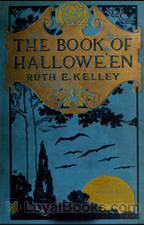 The Book of Hallowe'en
The Book of Hallowe'en
This book is intended to give the reader an account of the origin and history of Hallowe’en, how it absorbed some customs belonging to other days in the year,—such as May Day, Midsummer, and Christmas. The context is illustrated by selections from ancient and modern poetry and prose, related to Hallowe’en ideas. | |
By: S. Baring-Gould (1834-1924) | |
|---|---|
 Curious Myths of the Middle Ages
Curious Myths of the Middle Ages
This volume is an example of Sabine Baring-Gould's extensive research into the middle ages. This volume of 12 curiosities was one of Baring-Gould's most successful publications. | |
By: Saint Thomas Aquinas (1225-1274) | |
|---|---|
 Summa Theologica - 06 Pars Prima Secundae, On the Last End, On Human Acts
Summa Theologica - 06 Pars Prima Secundae, On the Last End, On Human Acts
The Summa Theologica (or the Summa Theologiae or simply the Summa, written between 1265–1274) is the most famous work of Thomas Aquinas, even though it was never finished. It was intended as a manual for beginners and a compilation of all of the main theological teachings of that time. It summarizes the reasoning for almost all points of Christian theology in the West, which, before the Protestant Reformation, subsisted solely in the Roman Catholic Church. The Summa's topics follow a cycle: the existence of God, God's creation, Man, Man's purpose, Christ, the Sacraments, and back to God... | |
 Summa Theologica - 12 Pars Secunda Secundae, Treatise on Gratuitous Graces and the States of Life
Summa Theologica - 12 Pars Secunda Secundae, Treatise on Gratuitous Graces and the States of Life
The Summa Theologica (or the Summa Theologiae or simply the Summa, written 1265–1274) is the most famous work of Thomas Aquinas (c. 1225–1274) although it was never finished. It was intended as a manual for beginners and a compilation of all of the main theological teachings of that time. It summarizes the reasoning for almost all points of Christian theology in the West, which, before the Protestant Reformation, subsisted solely in the Roman Catholic Church. The Summa's topics follow a cycle: the existence of God, God's creation, Man, Man's purpose, Christ, the Sacraments, and back to God... | |
By: Samuel B. Harding (1866-1927) | |
|---|---|
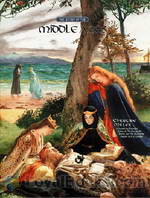 The Story of the Middle Ages
The Story of the Middle Ages
Intended for children 11 to 14 years old, The Story of the Middle Ages relates a little known period of history in an interesting and entertaining way. The author terms the Middle Ages as that period in the history of Europe between the fifth and fifteenth centuries. Its beginning is marked by the decline and fall of the mighty Roman Empire and its end is generally thought to be the dawn of the Renaissance or the Age of Discovery. The Middle Ages are also divided by historians into the Early, High and Late Middle Ages... | |
By: Samuel Cheetham | |
|---|---|
 History of the Christian church
History of the Christian church
The intention of this work is to provide a sketch of the History of the Church in the first six centuries of its existence, resting throughout on original authorities, and also giving references to the principal modern works which have dealt specially with its several portions. It is hoped that it may be found to supply a convenient summary for those who can give but little time to the study, and also to serve as a guide for those who desire to make themselves acquainted with the principal documents from which the History is drawn. | |
By: Samuel Johnson | |
|---|---|
 Plan and Preface to a Dictionary of English
Plan and Preface to a Dictionary of English
The published dictionary was a huge book: with pages nearly 1½ feet tall and 20 inches wide, it contained 42,773 words; it also sold for the huge price of £4/10s. ($400?). It would be years before “Johnson’s Dictionary”, as it came to be known, would ever turn a profit; authors’ royalities being unknown at that time, Johnson, once his contract to deliver the book was fulfilled, received no further monies connected to the book. Johnson, once again a freelance writer, albeit now a famous one, faced a grim hand-to-mouth existence; however, in July 1762 the twenty-four year old King George III granted Johnson an annual pension of £300... | |
By: Samuel Smiles (1812-1904) | |
|---|---|
 Lives of the Engineers (George and Robert Stephenson)
Lives of the Engineers (George and Robert Stephenson)
George Stephenson did not invent the steam engine, that was due to Newcomen and later to James Watt. He did not invent the steam locomotive, that was due to a number of people including Cugnot, Trevithick and others. He did not invent the Railway. Railways or tramways had been in use for two hundred years before Stephenson.The reason why Stephenson was known as ‘The father of the steam locomotive’ was that he took a primitive, unreliable and wholly uneconomic device and turning it into an efficient... | |
By: Sarah Knowles Bolton (1841-1916) | |
|---|---|
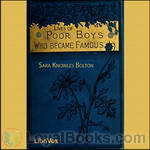 Lives of Poor Boys Who Became Famous
Lives of Poor Boys Who Became Famous
These characters have been chosen from various countries and from varied professions, that the youth who read this book may see that poverty is no barrier to success. It usually develops ambition, and nerves people to action. Life at best has much of struggle, and we need to be cheered and stimulated by the careers of those who have overcome obstacles.If Lincoln and Garfield, both farmer-boys, could come to the Presidency, then there is a chance for other farmer-boys. If Ezra Cornell, a mechanic, could become the president of great telegraph companies, and leave millions to a university, then other mechanics can come to fame... | |
 Famous American Statesmen
Famous American Statesmen
A sketch of the lives of some of America's early Statesmen: George Washington, Benjamin Franklin, Thomas Jefferson, Alexander Hamilton, Andrew Jackson, Daniel Webster, Henry Clay, Charles Sumner, Ulysses S. Grant, and James A. Garfield. | |
By: Sarah Morgan Dawson (1842-1909) | |
|---|---|
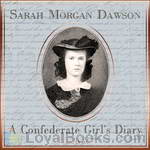 A Confederate Girl's Diary
A Confederate Girl's Diary
Sarah Morgan Dawson was a young woman of 20 living in Baton Rouge, Louisiana, when she began this diary. The American Civil War was raging. Though at first the conflict seemed far away, it would eventually be brought home to her in very personal terms. Her family's loyalties were divided. Sarah's father, though he disapproved of secession, declared for the South when Louisiana left the Union. Her eldest brother, who became the family patriarch when his father died in 1861, was for the Union, though he refused to take up arms against his fellow Southerners... | |
By: Sarah Orne Jewett (1849-1909) | |
|---|---|
 Country of the Pointed Firs
Country of the Pointed Firs
The Country of the Pointed Firs (1896) is considered Jewett’s finest work, described by Henry James as her “beautiful little quantum of achievement.” Despite James’s diminutives, the novel remains a classic. Because it is loosely structured, many critics view the book not as a novel, but a series of sketches; however, its structure is unified through both setting and theme. Jewett herself felt that her strengths as a writer lay not in plot development or dramatic tension, but in character development... | |
By: Seabury Quinn (1889-1969) | |
|---|---|
 Servants of Satan
Servants of Satan
Noted weird fiction author Seabury Quinn brings to life true tales of witch trial persecution within the pages of Weird Tales magazine! - Summary by Ben Tucker | |
By: Sidney Heath (1872-1953) | |
|---|---|
 Exeter
Exeter
Exeter, county town of Devon, is one of England's most historic cities with remains of the Roman occupation and medieval times still on view. Exeter cathedral, founded in 1050 and completed 400 years later, has the longest uninterrupted vaulted ceiling in the country. This short book in Blackie & Sons' Beautiful England series details the history of the city and it many sites of interest, with chapters on the city, the cathedral and the River Exe. Readers who can access the printed version of the book on Internet Archive, may enjoy looking at E. W Haslehursts' 12 colour illustrations while listening to this audiobook. - Summary by Phil Benson | |